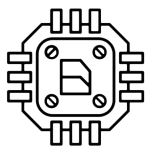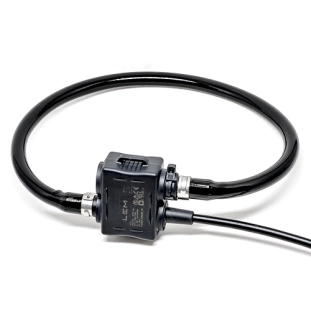Today, we are seeing an acceleration of the transition toward green energy, which translates into gradual electrification of the transport system and consequent growth in the number of electric vehicles on our roads. The two key factors on which the success of electric mobility depends are reducing range anxiety on the battery side and providing accurate information at the system level based on the battery health and state of charge but also on the inverter. That helps to reduce costs, enabling more efficient powertrain design. In both use cases, accurate current sensors play a relevant role.
There is also a race in the electronics industry to reduce the cost and footprint of any component, including the current sensor. The demand for smaller and cheaper sensors has accelerated the adoption of silicon carbide power modules, thanks to their ability to cope with higher voltage levels and power density, enabling better system efficiency.
LEM’s current-sensing solutions
LEM, a company founded 50 years ago and headquartered in Geneva, has always been in the current-sensing business, developing its proprietary technologies all this time. LEM integrates a full spectrum of activities, including design, testing, and manufacturing.
“It is fair to say that today, LEM is the sole pure player on current sensing,” said Bastien Musy, vice president of global product management at LEM. “A number of companies make current sensors, but they are typically part of bigger corporations.”
LEM is offering sensors that range from very small current levels up to several thousand amperes, covering a very broad spectrum of applications, including industrial and automotive drives, sensors and DC meters for charging infrastructure, high-precision devices for medical applications and test benches, automotive battery management systems, and many more.
Current sensors are widely used in inverter applications, typically adopting an open-loop measurement technique. Because a ferrite core is needed, there is a potential limitation in terms of reducing the footprint of the device. HOB-P, LEM’s newly introduced current sensor, is a good example of how the size of the ferrite core can be reduced while maintaining the same level of performance required by the customer application. HOB-P has a hybrid architecture, as it includes an active component (the ASIC with the ferrite shield) and a passive component, which is a pickup coil integrated on the PCB (see Figure 1).
The main idea behind this hybrid solution is to increase the frequency — in this case, above 1 MHz — by means of the pickup coil. If we only had the ferrite, we would not be able to increase the frequency to such a high level. In this specific case, the reason for increasing the frequency was basically to allow for fast switching frequencies, exploiting SiC-based power device properties in inverter design.
“We are trying to work around the limitations of the open-loop architecture, and HOB is an example of how we can bring our expertise to innovative products,” said Musy.

The size of the ferrite is clearly a function of the current levels measured. In this case, HOB-P is a transducer that measures up to 150 A nominal and up to 250 A maximum. The response time is very short, less than 200 ns. And here, we are talking about an open-loop technology that intrinsically offers lower response times than a closed-loop technology.
The wide adoption of SiC in inverters is going to lead to an increase of the working voltage.
“We are seeing automotive manufacturers going gradually from 400-V architecture to 800-V architecture to reduce the size of the wire harness for a given level of power,” said Musy. “Also, this move toward higher working voltages is enabling faster charging times, and so we are upgrading our portfolio.”
Fast charging requires DC metering, which is something relatively new. Here, LEM has developed a DC meter that provides accurate information to the charging station and allows for the billing of this information to the end consumer. However, measuring direct current is not as easy as measuring alternate current. Because there are power losses all the way down to the plug that connects to the battery, the measurement equipment must be calibrated. The sensing unit must be calibrated to compensate for all of these characteristics, as well as the length of the connection, in order to provide the most accurate information to the user.
“Another area where we are innovating is residual current monitoring and residual current detection,” said Musy. “Residual current detection is essential to protect individuals, and LEM is offering a product that shuts down the system in the event of a fault — namely, a current leakage detected in the cable or in the on-board charger of the vehicle.”
Solar energy is another relevant market for current sensors. Here, LEM is offering products that are designed for solar applications, such as inverters, converters, and residual current detectors.
“We are also present in electricity distribution, where we are proposing solutions to monitor the load of the grid, especially on mid-and low-voltage stations,” said Musy.
Traditionally, the grid was basically structured to go in one direction, from producer to distributor and then to the end consumer. Today, distributed energy resources are gaining traction in the market, optimizing the flow of both input and output of the entire grid. The grid must cope with the high level of peak power required to fill the charging infrastructure. LEM is also present in this market by offering Rogowski-coil–based sensors.
Rogowski coils (see Figure 2), which are flexible split-core AC current sensors, are plugged into the cables of the distributor, allowing municipalities, utilities, or building management companies to monitor in real-time the local distribution network. This technology offers an excellent cost-flexibility tradeoff and is ideal for retrofitting existing installations.




 Current sensors
Current sensors Voltage sensors
Voltage sensors Humidity sensors
Humidity sensors Pressure sensors
Pressure sensors Temperature sensors
Temperature sensors








